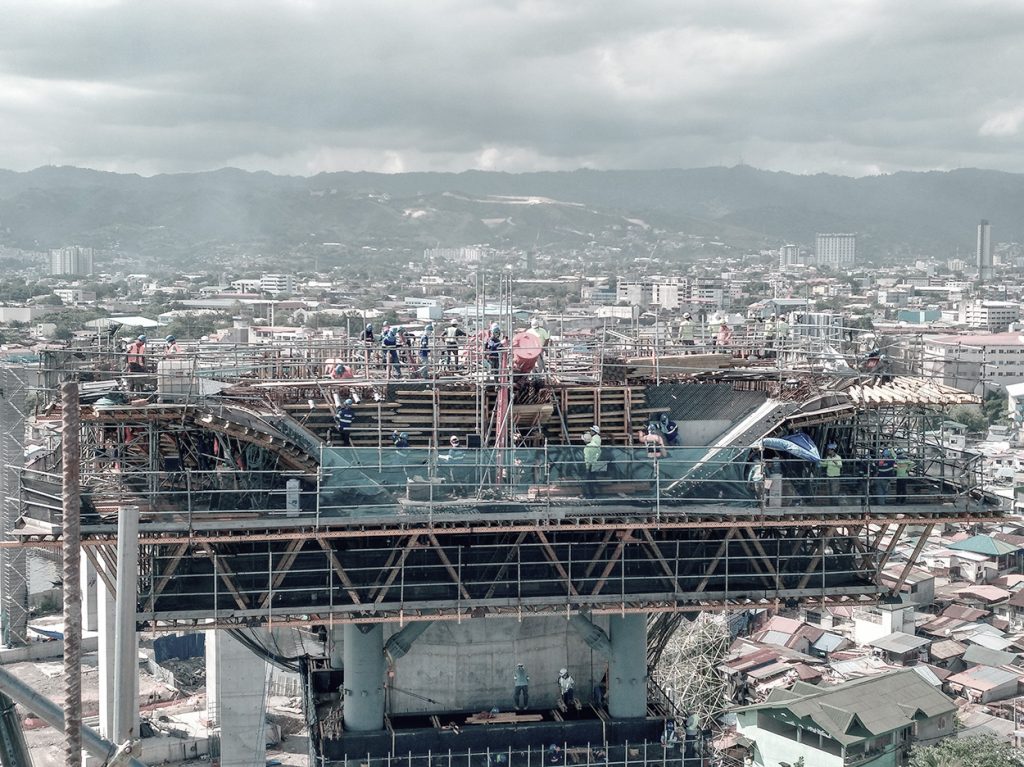The construction of the deck by successive cantilevers is progressing at a good pace. Three tie rods have already been installed in tower T1 and five in tower T2 of the 14 pairs that exist in total, which have lengths between 60 and 210 meters, and a variable number of chords between 68 and 120 and are being supplied by the Freyssinet company.
Javier Muñoz-Rojas, CFCSL director of the project, tells us: “The most relevant feature of the deck construction resides in the asymmetry of the deck with respect to the towers, while the main span ties are spaced 14 m apart and those of the lateral spans compensation 7.5 m. To balance the imbalance that this causes, it is necessary to install two more cables and carry out mass concrete counterweights inside the box in the rear spans. All this requires careful monitoring of the evolution of the geometry of the tower and deck as well as an exhaustive control of the loads on the advance fronts at all times. “
The concreting work on the two 145m. high pylons from the main bridge has been completed and you can already see the ecumenical crosses mounted on the top of Tower 2. There will be a total of 8 crosses of 40m. installed on all sides of the two towers. They will be illuminated at night to highlight Cebu’s important role as the cradle of Christianity. The crosses are made of steel and will be illuminated with interconnected LED lights.
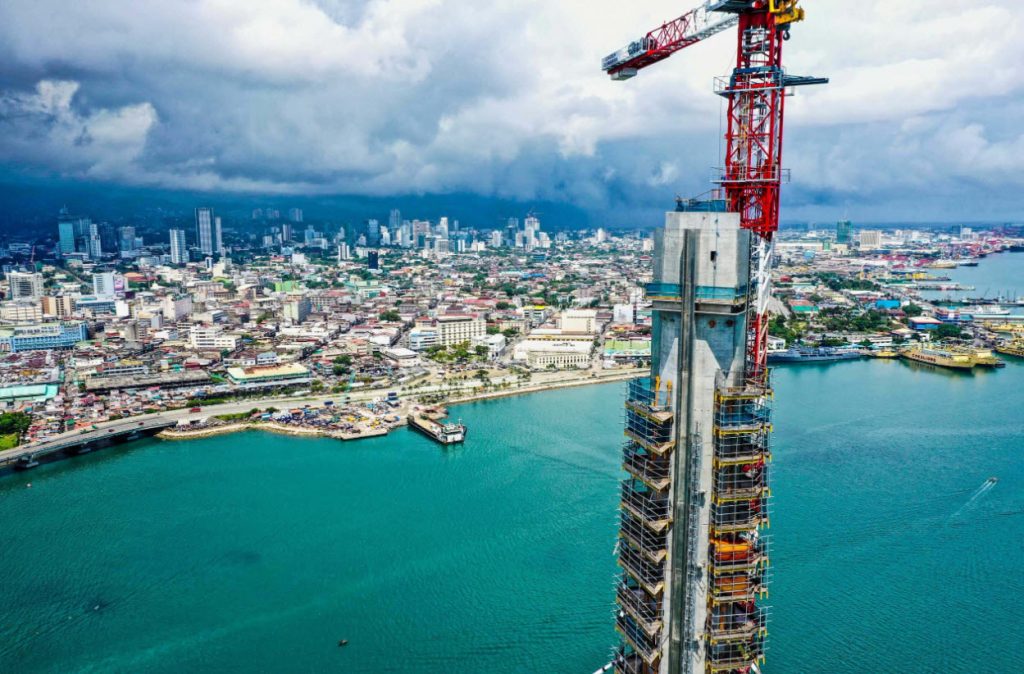
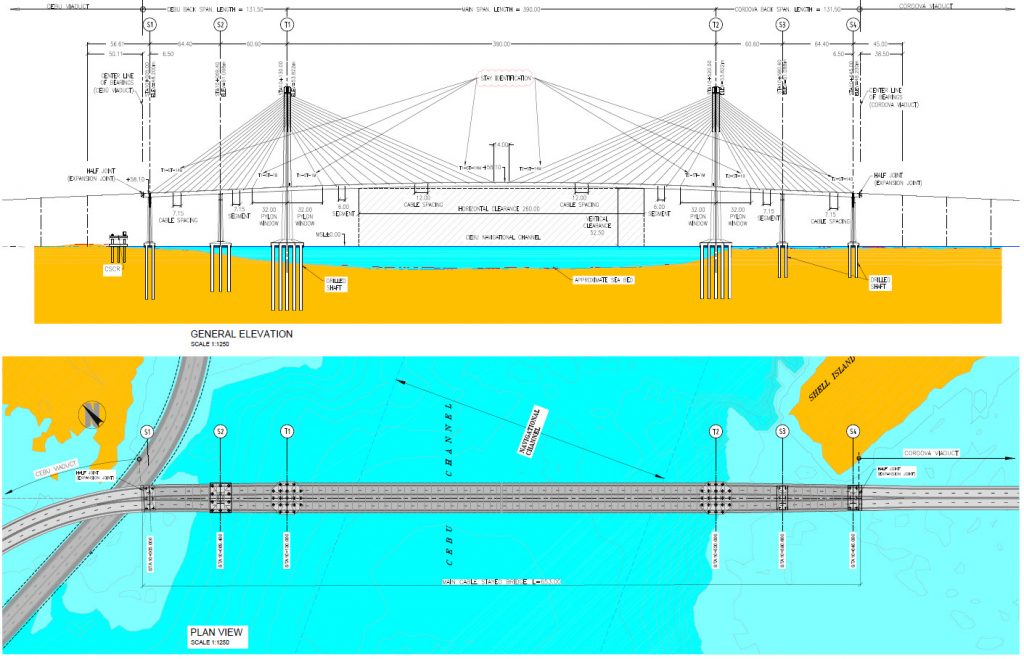
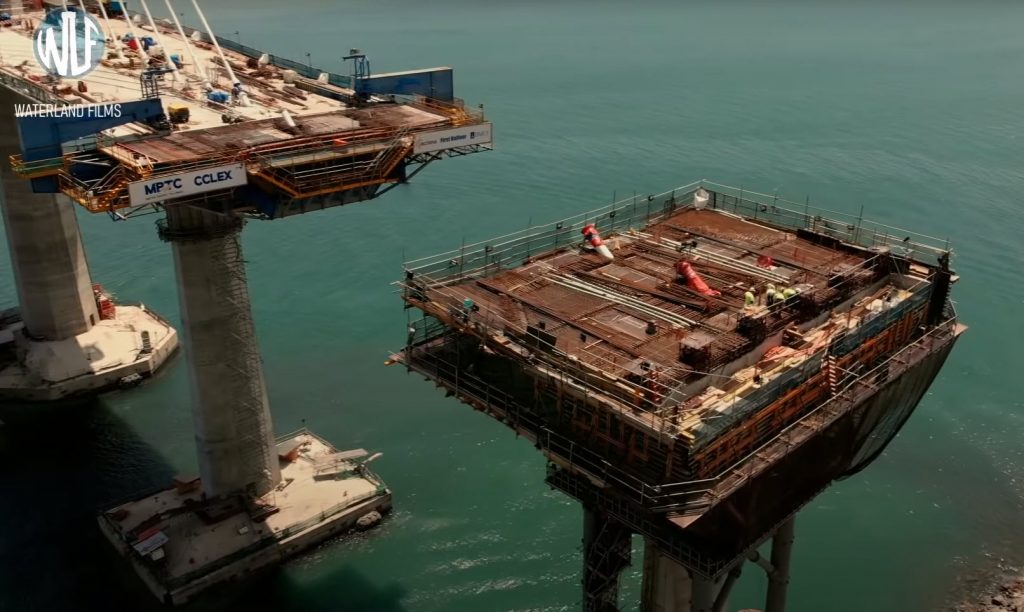
The Pier table of S1 is practically finished, being able to observe the reinforcement of the upper slab of the last section of the pier table.
The formwork tubes on tie rods 13 and 14 of the back span are now in position.
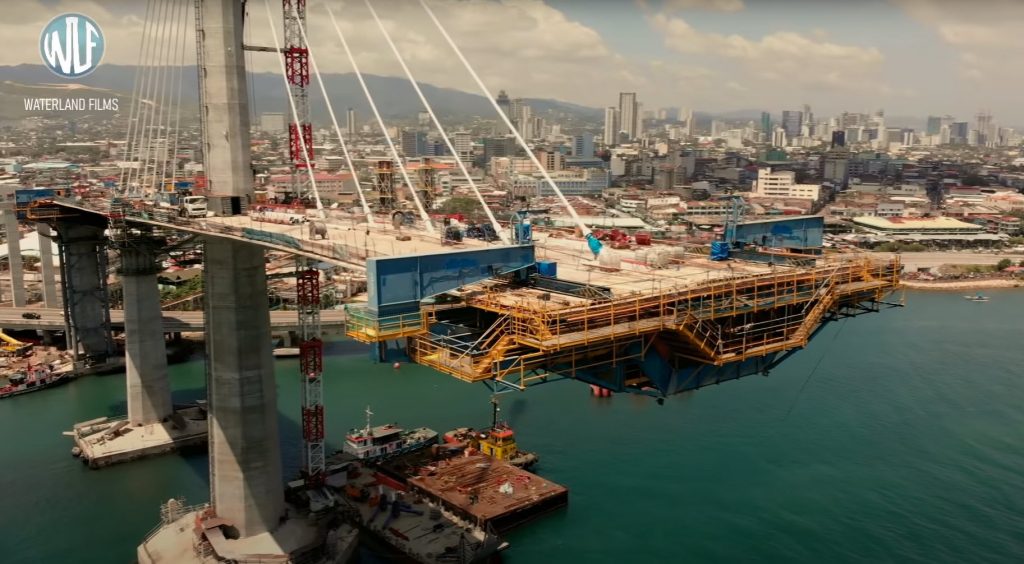
The pier table receives the prefabricated beams of the last span of the access viaduct on the Cebu side.
The sections of the pylons T1 and T2 are practically equal, having been tensioned up to tie 5 of the main span and tie 7 of the back span. In preparation is the launch of the advance carriage for the positioning and execution of segment 15 of the main.
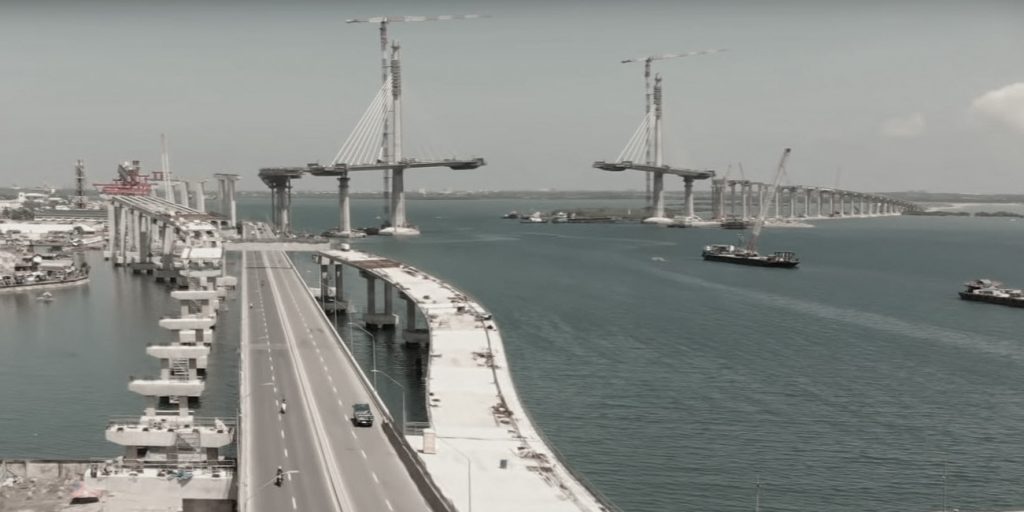
As these are unbalanced spans, the number of back and main tie rods have a maximum offset of 2 ties, with internal counterweights on the back span side.
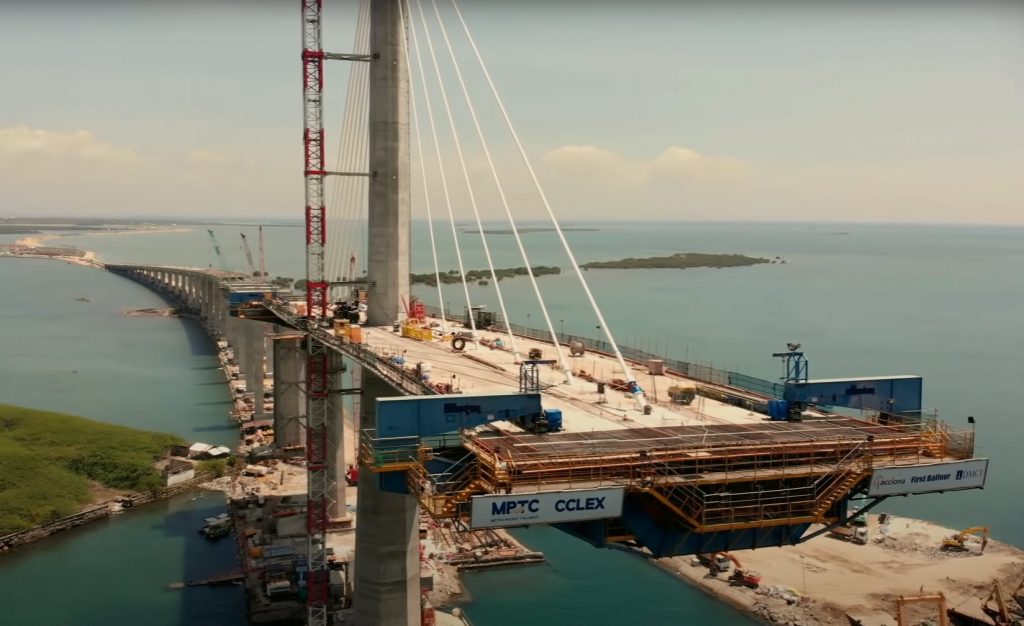
The span of the cantilevered spans is 95m on the main side and 85.6m on the back side.
It is also possible to observe the auxiliary anchoring structure in the construction phase of the anchoring pile S2 and S3 that are hanging from the deck. In a later phase, a descent of the deck and subsequent monolithic union with the S2 and S3 pile will be made
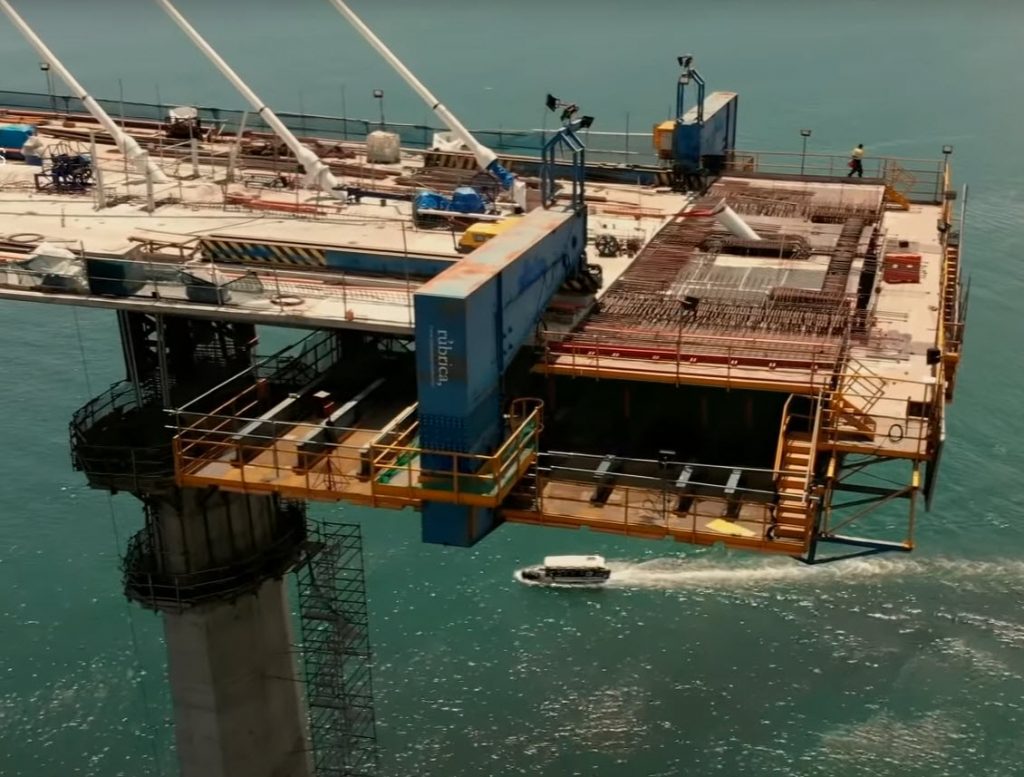
Jose Manuel Dominguez, CFCSL Senior Engineer for the Cebu Bridge, tells us that “one of the structurally important milestones during the geometric control in construction is the connection of the deck with the S2 and S3 piers. This connection materialized during construction with the structure Auxiliary that is already observed hanging from the deck and subsequent monolithic connection with the piers, will be carried out by means of the controlled lowering of the deck with prestressed bars that will act on the deck by means of distribution beams, which will take place soon.
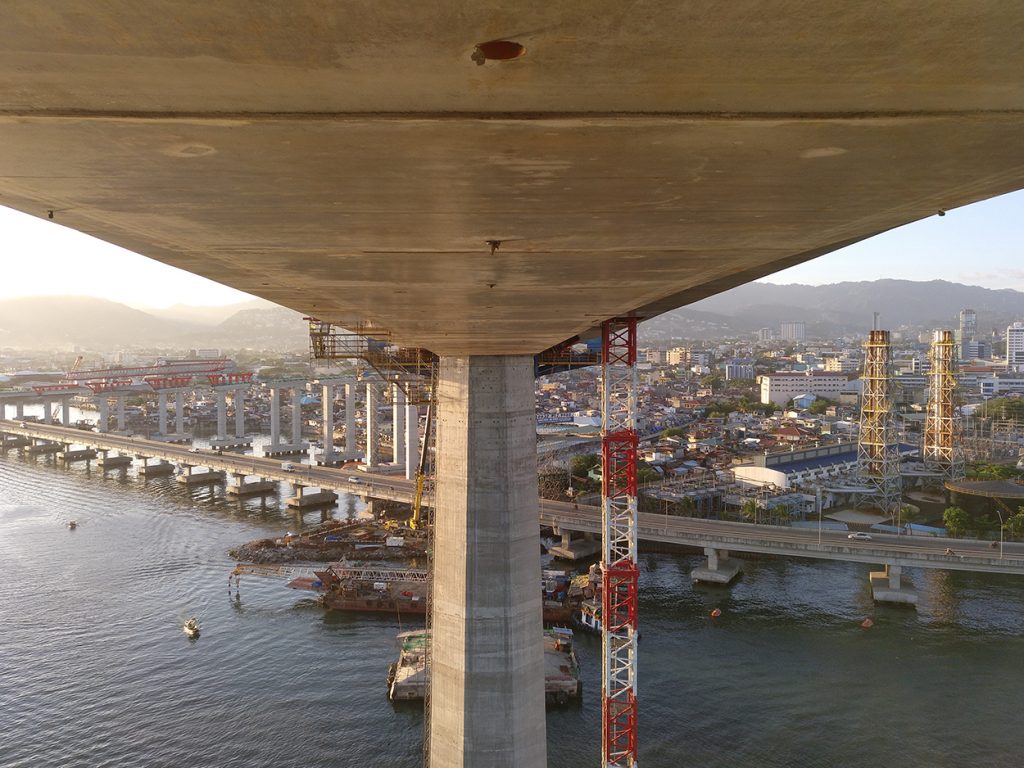
CFCSL has designed the bridge and is currently responsible for geometric control and construction assistance.
Many thanks to Nimrod Hao de Waterland Films for letting us use his images and video.
